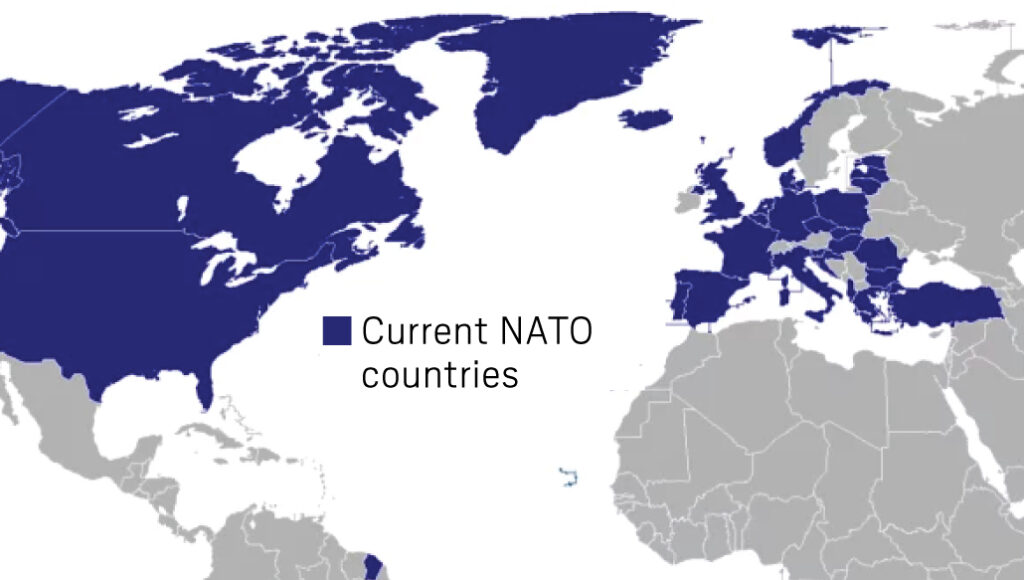
With Russia invading the Ukraine this month, we look at the region and why nations near the conflict are not likely to get involved militarily.
On Feb. 23, Russian President Vladimir Putin launched a “special military operation” in Ukraine, which had hopes to join NATO but never has. Putin said the goal was to demilitarize Ukraine and protect Russia.
The North Atlantic Treaty Organization’s creation was part of a broad effort to serve three purposes:
Deterring Soviet expansionism.
Discouraging the revival of nationalist militarism in Europe through a strong North American presence on the continent.
Encouraging European political integration.
What are Russia’s concerns? The following is from an article published by the Council for Foreign Relations:
“Russian leaders have long been wary of the eastward expansion of NATO, particularly as the alliance opened its doors to former Warsaw Pact states and ex-Soviet republics in the late 1990s and early 2000s. Their fears grew in the late 2000s as the alliance stated its intent to admit Georgia and Ukraine at an unspecified point in the future.
“For the Kremlin, the notion that Ukraine, a pillar of the Soviet Union with strong historic ties to Russia, would join NATO was a red line.
In 2014, leaders in the United States and NATO said “they remain committed to restoring Ukraine’s territorial integrity and sovereignty. They do not recognize Russia’s claims to Crimea, and have encouraged Russia and Ukraine to resolve the conflict in the country’s eastern Donbas region via the Minsk agreements. Signed in 2014 and 2015 and brokered by France and Germany, these accords call for a cease-fire, a withdrawal of heavy weapons, Ukraine’s control over its border with Russia and local elections and a special political status for certain areas of the region,” the article says.
Russia is the largest supplier of oil and gas to Europe and the second-largest oil exporter in the world behind Saudi Arabia. It is believed many nation’s will not punish Russia harshly due to their reliance on Russia’s energy supply.
NATO evolution
The North Atlantic Treaty Organization is a military and political alliance formed in 1949 by 12 countries and later expanded to its current 30 members, including three post-Soviet states.
The main goal of NATO is set out in Article V of the North Atlantic Treaty, which says that an “armed attack against one” NATO member “shall be considered an attack against them all.” As the U.S. is the biggest military power in the world effectively the agreement binds America to defend Europe.
Ukraine historical snapshot
Following the collapse of czarist Russia in 1917, Ukraine achieved a short-lived period of independence (1917-20), but was reconquered and endured Soviet rule that engineered two forced famines (1921-22 and 1932-33) in which more than 8 million died. In World War II, German and Soviet armies were responsible for 7 to 8 million more deaths. Although Ukraine achieved independence in 1991 with the dissolution of the USSR, democracy and prosperity remained elusive as the legacy of state control and endemic corruption stalled efforts at economic reform, privatization and civil liberties.
Population: 43,745,640
Languages: Ukrainian (official) 67.5%, Russian 29.6%, other 2.9%
Area comparison: Almost four times the size of Georgia; slightly smaller than Texas.
Economic significance
After Russia, the Ukrainian Republic was the most important economic component of the former Soviet Union, producing about four times the output of the next-ranking republic. Its fertile black soil accounted for more than one-fourth of Soviet agricultural output and its farms provided substantial quantities of meat, milk, grain and vegetables to other republics.
Likewise, its diversified heavy industry supplied unique equipment such as large diameter pipes and vertical drilling apparatus and raw materials to industrial and mining sites in other regions of the former USSR.
Russia’s occupation of Crimea in March 2014 and ongoing Russian aggression in eastern Ukraine have hurt economic growth.In 2017, Ukraine redirected trade activity toward the EU, displacing Russia as its largest trading partner.
Sources: The Associated Press, The Economist, NATO.int, CIA World Factbook, National Defense Magazine
